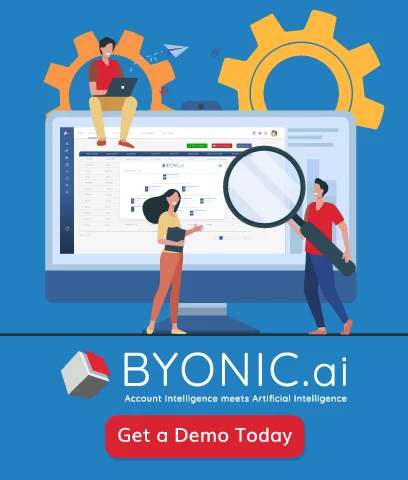FinTech Surge: A New Era Unfolds
February 2025 has been a landmark month for FinTech, marked by seismic shifts in how technology, regulation, and consumer expectations are reshaping the global financial landscape. From the proliferation of embedded finance to the mainstreaming of decentralized platforms and the explosive growth of AI-driven personalization, the industry is witnessing a transformation that’s both rapid and profound. This article dissects the most pivotal, latest trends that have emerged, weaving in authoritative data and real-world examples to illuminate the future of financial technology.
Embedded Finance: The Seamless Integration Revolution
Financial services are no longer siloed within banks or standalone apps. In 2025, embedded finance became the backbone of digital commerce, allowing non-financial brands to offer banking, lending, payments, and insurance directly within their platforms. The embedded finance sector is projected to soar to $138 billion by 2026, up from $43 billion just four years prior (Source: Dirox).
Real-World Momentum:
- Shopify Capital empowers merchants with instant access to funding, eliminating the need for traditional bank loans.
- Apple’s suite—including Apple Pay, Card, and Savings—cements its role as a financial services powerhouse.
Strategic Impact:
Brands that fail to integrate financial offerings risk losing relevance as consumers gravitate toward platforms that make transactions effortless and contextual (Source: Softjourn).
DeFi’s Leap: Decentralized Finance Matures
Decentralized finance (DeFi) has evolved from a disruptive experiment to a robust ecosystem. February 2025 saw DeFi protocols like Aave, Compound, and Uniswap reach new heights in security, scalability, and regulatory alignment (Source: Softjourn).
Breakthrough Innovations:
- Decentralized exchanges now offer deeper liquidity and lower fees, luring users from traditional platforms.
- Staking and yield optimization tools are more sophisticated, balancing risk and reward.
- Blockchain-based insurance solutions like Nexus Mutual are gaining traction, making DeFi safer for the masses.
Industry Effect:
DeFi’s integration into mainstream finance is accelerating, with new partnerships and products bridging the gap between centralized and decentralized ecosystems.
AI-Powered Personalization: Intelligence at the Core
Artificial intelligence is now the engine behind FinTech’s most compelling innovations. By February 2025, the AI market in financial services had reached $115.4 billion, with forecasts predicting it will more than double by 2029 (Source: Acropolium).
Game-Changing Stats:
- AI-driven contract review tools cut processing times by 75%.
- Leading FinTechs report up to 95% accuracy improvements in data analytics.
Transformative Outcomes:
AI enables hyper-personalized customer journeys, smarter risk assessment, and real-time fraud detection. As digital threats escalate, AI’s role in safeguarding transactions and ensuring compliance is more critical than ever (Source: Juniper Research).
Digital Payments: The New Global Standard
Digital payment adoption has reached unprecedented levels, with over 3 billion people using digital wallets and contactless solutions in 2025—a number expected to climb to 4.45 billion by 2029 (Source: Siege Media).
Emerging Forces:
- Virtual cards are revolutionizing expense management for businesses.
- NFC-enabled wallets (like Apple Pay) are becoming ubiquitous in retail and online commerce.
- Behavioral biometrics are redefining authentication, making payments both frictionless and secure.
Open Banking: The API-Driven Financial Renaissance
Open banking is fueling a wave of innovation, as new API standards empower third-party developers to create novel financial experiences. Banks are racing to modernize legacy systems and partner with agile FinTechs to stay relevant.
Key Dynamics:
- Integration challenges remain for incumbents, but those who adapt are unlocking new value.
- API-first FinTechs are capturing market share by enabling seamless data sharing and payments.
CBDCs: Central Banks Enter the Digital Arena
Central Bank Digital Currencies (CBDCs) are moving from concept to reality. February 2025 saw accelerated pilots and launches, with central banks aiming to boost financial inclusion and streamline transactions (Source: Softjourn).
Considerations:
CBDCs promise efficiency and accessibility but raise critical questions around privacy, interoperability, and regulatory oversight.
Cybersecurity and Compliance: The Unyielding Priorities
As FinTech’s digital footprint expands, so do the risks. In February 2025, cybersecurity and compliance were top priorities, with blockchain integration projected to cut bank infrastructure costs by 30%—saving the industry over $10 billion annually (Acropolium).
Imperative:
Staying ahead of evolving threats requires constant innovation in security protocols and regulatory technology.
Super Apps: The Financial Ecosystem in Your Pocket
Super apps are redefining digital engagement, offering users a unified platform for payments, banking, shopping, and communication. These all-in-one solutions are rapidly gaining ground, especially in emerging markets (Source: Softjourn).
Customer Experience: The Ultimate Differentiator
With digital channels now the norm, exceptional customer experience is non-negotiable. Intelligent, always-on support powered by AI and automation is setting new standards for responsiveness and personalization (Source: TTEC).
FinTech’s Growth Trajectory: The Numbers Behind the Revolution
- The global FinTech market hit $280 billion in 2025, on track to reach $1.38 trillion by 2034 (Source: Acropolium).
- Over 30,000 FinTech startups are fueling a wave of investment and disruption.
- Digital payments, embedded finance, and AI-driven solutions are leading the charge, with open banking and regulatory innovation paving the way.
Conclusion: February 2025—A Defining Moment for FinTech’s Future
The events of February 2025 have set a new course for FinTech. The convergence of embedded finance, DeFi, AI, digital payments, and regulatory innovation is not just transforming financial services—it’s rewriting the rules of engagement. The future belongs to those who embrace digital integration, prioritize security, and put customer experience at the heart of their strategy.



